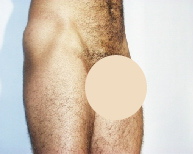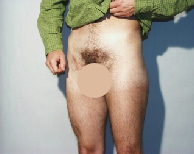Erection prosthesis
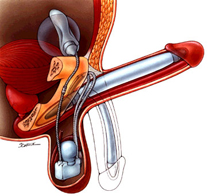
A contribution by Falk
The decision for or against penoid is not an easy one for many transsexual men (NIBD).
Advantages and disadvantages are weighed against each other.
This is made more difficult by the prevailing information deficit, because only very few post-OP formerly transsexual men (NIBD) are willing or interested in making their experiences accessible to a broad mass of interested parties.
Questions about the ability to orgasm, aesthetics, etc., often remain unanswered until one (s) can look back on one's own experiences ...
I would like to take up one main topic at this point:
The mechanical functionality
The newly won "little friend" may not only serve as a "urine drain", no, he also wants to enjoy the little joys in life, such as copulation.
In order to enable penetration into the vulva or anus, the penoid is provided with an implanted erectile prosthesis.
Erectile prostheses are artificial cavernous bodies made from various plastics.
There are one-piece, flexible (cylinder only), two-piece hydraulic (cylinder + pump) or three-piece hydraulic (cylinder + pump + fluid container) implants.

The cylinders are available in different lengths, not every penis / phallus is the same length.
(Image source: https://de.wikipedia.org/wiki/Penisprothese)
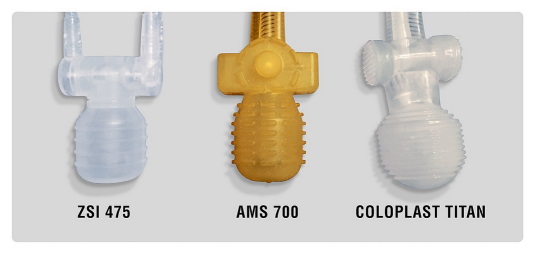
Various pump models, newer generations, are better at imitating a testicle.
(Image source: https://de.wikipedia.org/wiki/Penisprothese)
With the flexible rod prosthesis (costs approx. 1000-1500 €), the penis only has to be bent upwards before engaging in sexual intercourse.
The disadvantage of this prosthesis technology: the penis remains permanently rigid. It can be bent downwards so that it protrudes from the body at an angle of approx. 45 °.
The stiffness of the silicone rod is slightly less than that of a naturally erect penis.
In contrast, the hydraulic prostheses (costs approx. 4000 - 6000 €) imitate the natural erection; in the normal state the penis (the penoid) is flaccid.
In order to achieve a stiffening, fluid is pumped into the cylinders in the erectile tissue via a pump that is placed in the scrotum, causing them to stiffen.
The decisive advantage of hydraulic penile prostheses is that the penis is only stiffened when it is required.
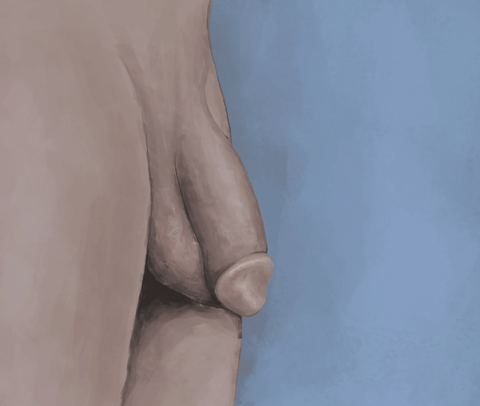
Inducing an erection with an implanted erectile prosthesis.
Source: From HovhannesKarapetyan - Eigenes Werk, CC BY-SA 4.0, https://commons.wikimedia.org/w/index.php?curid=87500833
Disadvantages are the more complex operation, which requires appropriate know-how from the surgeon, as well as a repair rate for cylinder and pump of approx. 10-15% for long-term wearers (5-10 years).
Risks / Complications
The main risk of the operation is the risk of infection.
As after any operation, bleeding, infections, wound healing disorders and general pain can also occur here. The prosthesis itself can also cause complications.
With penile prostheses, as with all mechanical / technical devices, defects can occur that sometimes require surgical correction.
Here are two more examples, each flaccid and erect:
Click on the images to see the uncensored version!
More information about the erectile prosthesis can be found on the pages of Boston Scientific and Coloplast.
Weiter gehts:
- Mastectomy
- Hysterectomy
- The clitoris
- Metaidoioplasty
- Phalloplasty
- Erection prosthesis
- Testicular implants


